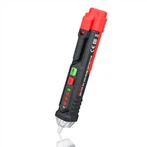Uncertainty Evaluation of Measuring Result of Indication Error of Light Meter
Photometers are widely used in lighting measurements in municipal medical care, industry and agriculture, and building construction. According to the provisions of JJG245-2005 "Illuminance Meter Verification Regulations", the light track calibration method is adopted, and the illuminance produced by the light intensity standard lamp at a certain distance is used to calibrate the meter under test. The illuminance standard device consists of a luminous intensity standard lamp, a light track with a scale (including a detector trolley, a diaphragm, a lamp holder, and a filament plane adjustment device), and a DC regulated power supply (digital display). The entire calibration process needs to be carried out in a dark room.
1 Analysis of the main factors affecting the measurement results
According to the relevant steps stipulated in the verification regulations, assemble the 2856K first-class standard lamp of luminous intensity and the illuminance meter under inspection at the designated position of the photometric measuring device. Light up the standard lamp and preheat it. After the current of the standard lamp is stable, change the distance between the standard lamp and the photometric head, read the display value of the illuminance meter, calculate the error of the display value, and analyze its uncertainty. Light meter calibration has very strict requirements on personnel and equipment. The technical level of the operator and the selection of equipment will affect the stability of the light source in the standard system, the shielding effect of stray light, the electrical measurement system, distance measurement, and the matching of the light meter filter.
1.1 Measuring distance and light track
The value transfer of laboratory illuminance is mostly completed by the light track calibration method.
This method makes full use of the inverse square law of distance: E= 1/2, so the linearity of distance measurement and light track will introduce errors.
The total error within 1m of the ranging meter shall not exceed 0.2mm, and the linearity error of the light track itself shall not exceed ±1mm.
1.2 Filament plane and optical head receiving surface
Calibration requires personnel to be skilled and experienced in optical path adjustment, alignment and other operations. Use the alignment device to adjust the receiving surface of the illuminance meter, the plane of the standard lamp filament, and the aperture of the diaphragm to make them perpendicular to the optical axis, and each center is located on the optical axis. On the other hand, complete the optical path to reduce the error caused by improper adjustment of the filament plane and the receiving surface of the optical head.
1.3 Standard light source
Because the illuminance of the light intensity standard lamp is used for calibration, the accuracy of the luminous intensity of the standard lamp must be strictly limited. Level-1 luminous intensity standard lamps, whose horizontal and vertical angles should meet the angle requirements, standard lamps rotate ±1.5° in the horizontal direction or ±1.0° in the vertical direction, and the change amplitude of the luminous intensity is required not to exceed 0.6%. The annual change rate Not to exceed 0.7%.
1.4 Electrical measurement system
Refer to the technical regulations to debug the DC stabilized power supply: the output voltage is continuously adjustable, and the amplitude of the output voltage change within ten minutes shall not exceed 0.02%; after the standard lamp is ignited, it should be warmed up and stabilized before measurement to ensure the luminescence of the standard lamp The strength is well reproduced.
Although the working current value of the standard lamp is consistent with the current value during verification, the exact same electrical measuring equipment is usually not used, so the actual working current value of the standard lamp is generally different, which will introduce errors.
1.5 Spectral characteristics of light meter filter
When measuring illuminance, the spectral responsivity distribution s(λ) of the detector should be consistent with the photopic efficiency v(λ) of the International Commission on Illumination (CIE), and the silicon photodiode or silicon photocell used in the illuminance meter is consistent with v (λ) is inconsistent, and a correction filter must be added. However, the matched s(λ) and v
(λ) cannot be completely consistent, and incomplete matching will bring errors to the results.
1.6 Stray light shielding
The materials of the supporting equipment must be able to shield light well, such as moving apertures, curtain apertures, etc., to prevent stray light from mixing into the optical path and destroying the experimental results. In actual testing, the shielding of stray light from the outside is relatively in place, but the stray light generated by the verification device itself cannot be completely shielded, which interferes with the readings of the illuminance meter.






